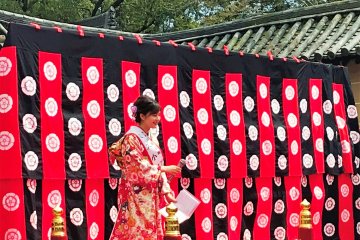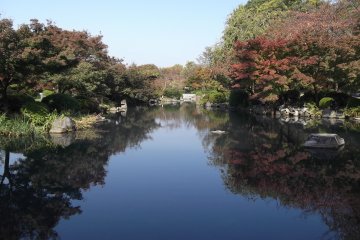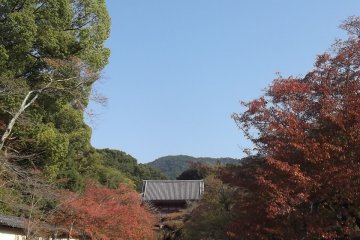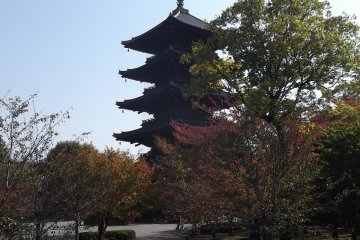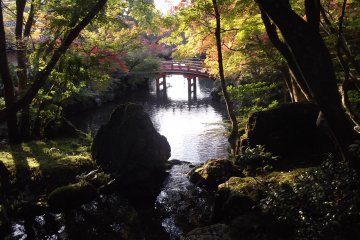If you go to Kyoto, then of course you should visit the 'big three': Kinkaku-ji, the temple of the golden pavilion; Kiyomizu-dera, with its stunning view over the city; and Fushimi Inari Taisha, a shrine with thousands of red gates stretching up a mystically atmospheric mountain.
However, there are dozens of places which, while not as well-known as these, are equally beautiful and interesting, and benefit from not being so heavily touristed. In no particular order, here's my top three of other places to see in Kyoto.
Daigo-ji
About twenty minutes east of the centre on the subway, Daigo-ji is a venerable temple complex that's one of the city's UNESCO World Heritage Sites. It's an expansive place, worth spending half a day at: there's a residence with a beautiful landscaped garden, several halls and a pagoda in a tranquil forest setting, and a museum open in spring and autumn for exhibitions of ancient treasures such as traditional crafts and Buddhist statues. The autumn view of the Bentendo Hall, enveloped in red leaves and reflected in its pond, is rightly regarded as one of the city's best.
To-ji
A short walk south-west of Kyoto Station, To-ji is another World Heritage Site, one of two huge guardian temples built by the main entrance of Heiankyo, before it was renamed Kyoto. In the pleasant, leafy grounds you'll find the highest pagoda in Japan, its five stories stretching up 55 meters, and in the Kondo and Kodo halls you can see displays of impressive, beautifully made Buddhist statues. On the first Sunday of each month a lively antique market is held here, and there's also a bustling flea market on the 21st of each month.
Otagi Nenbutsu-ji
In the leafy and very popular suburb of Arashiyama, this small temple is out away from the centre and attracts few visitors: I was there in autumn, and while the area's main draws of Tenryu-ji and the Bamboo Grove were packed, only three other people had ventured out this far from the middle of town. Not to be confused with nearby Adashino Nenbutsu-ji (unless you're me), Otagi Nenbutsu-ji is notable for its 1200 ancient, moss-covered rakan statues, stone figures of Buddhist disciples who have achieved nirvana, a state of heavenly enlightenment.




